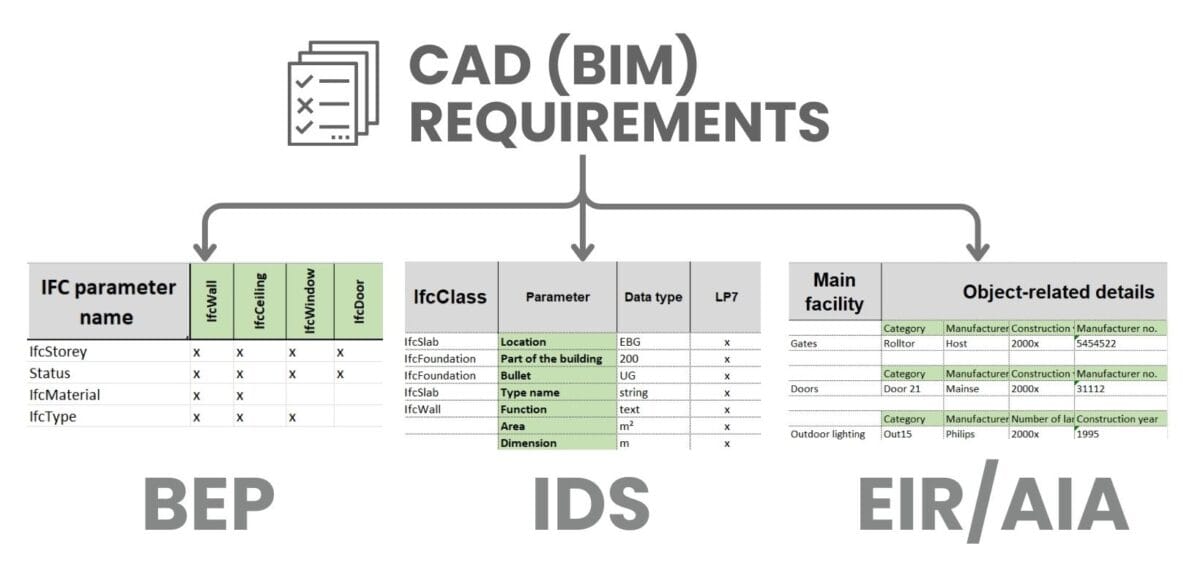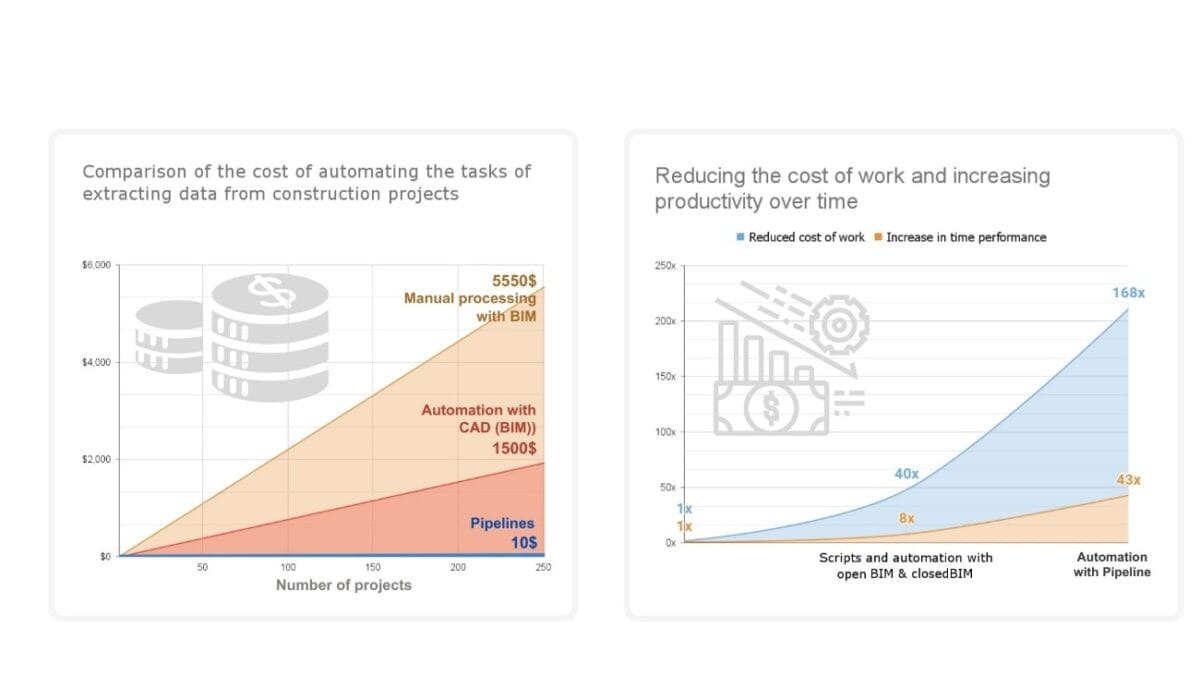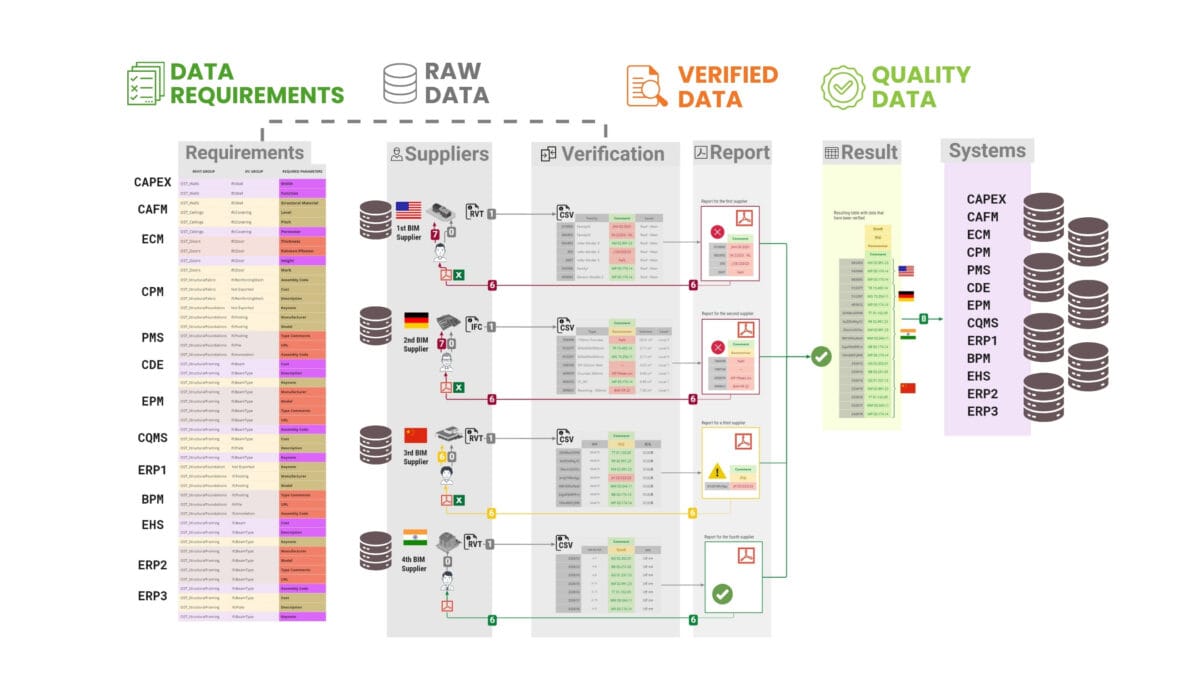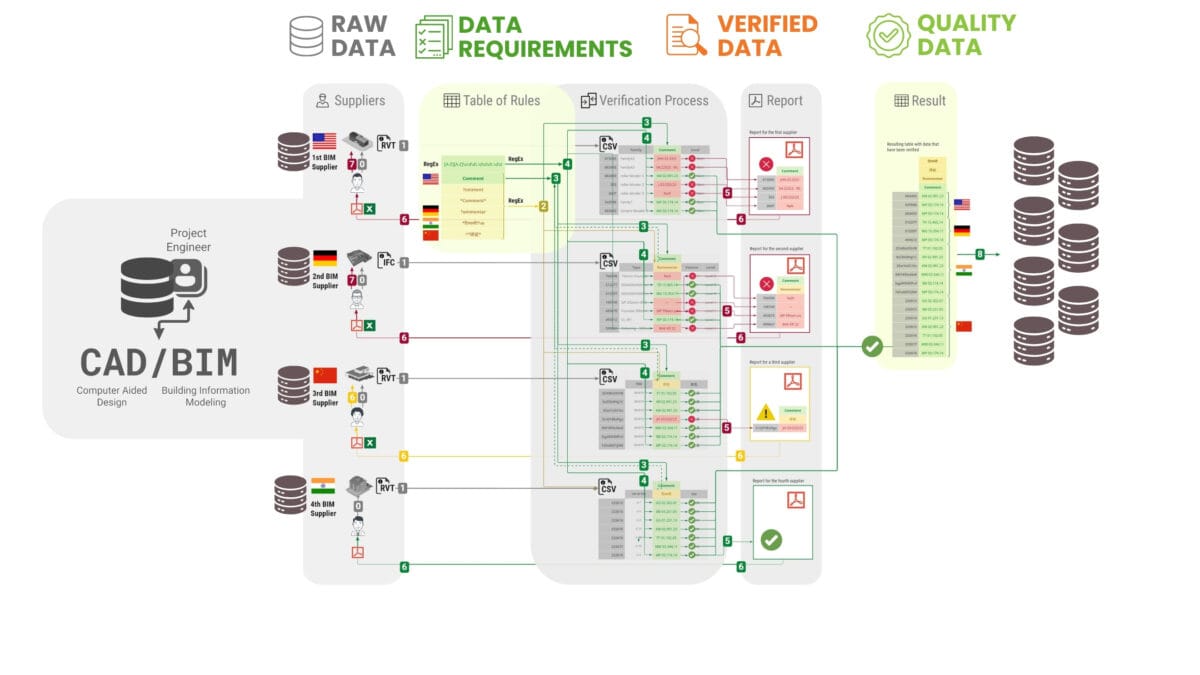In the mid-2000s the construction industry encountered an unprecedented challenge due to the rapid expansion of data in data management and processing systems, particularly those originating from CAD (BIM) departments. This surge in data volume caught company executives and managers off guard, leaving them unprepared for the growing data quality and data management requirements.
Taking advantage of the lack of open data & open solutions and limited competition in the data processing market, and using marketing campaigns related to the new acronym BIM from CAD (BIM) vendors, new organisations have begun to create new standards and concepts that de jure should be aimed at improving data management practices.
While almost all initiatives directly or indirectly supported by CAD (BIM) vendors have focused on optimizing workflows, they have resulted in a plethora of standards lobbied by various stakeholders, leading the construction industry to some ambiguity and confusion about data processes.
Let's list some of the new data standards that have emerged over the last years in the construction industry:
- BEP (BIM Execution Plan) describes how to integrate and utilize CAD (BIM) in a project by defining data handling methods and processes.
- EIR / AIA (Employer's Information Requirements) document, which is prepared by the client prior to the invitation to tender and contains the requirements for the contractor with regard to the preparation and delivery of information. It serves as the basis for the BEP in the respective project.
- AIM (Asset Information Model) - As part of the BIM process. Once the project is handed over and completed, the data model is called the "Asset Information Model" or AIM. The purpose of the AIM is to manage, maintain and operate the realized asset.
- IDS (Information Delivery Specification) determines what data and in what format is required at different stages of a construction project.
- LOD (Level Of Detail) indicates the level of detail of the CAD (BIM) model at different stages of design.
- APS (Autodesk® Platform Services) and similar tools from closed application vendors, describes the tools and infrastructure from CAD (BIM) vendors needed to create linked and open data models.
Most of the new concepts in the field of data handling in the construction industry offer a variety of approaches that must be harmonized with the marketing strategies of CAD vendors using BIM (Building Information Modeling). As a result, the concepts and some of the existing construction industry standards developed and promoted by interested companies in the last decades are often found to be redundant or even counterproductive in business processes. Instead of simplifying data processing, they create additional complexities.

Most of the new data requirements in the construction industry describe entity attributes and their boundary values through various standards that have tables at their core
One of the latest examples of new concepts is the IDS format, which allows to describe the requirements for the attribute composition of an information model - it creates information on attributes and their boundary values in a structured table form, which is then translated into XML format markup, which is called the IDS format.
As a result, the construction industry is coming up with more and more new ideas for data control and management every year, overlooking the fact that data in construction projects is no different from data in other industries, and that other industries, having uniform data processing methods, do not need similar requirements and concepts.
Although CAD (BIM) tool developers may give the impression of uniqueness in handling data in the construction, in reality the construction industry does not stand out with special information processing requirements compared to other industries.
The number of requirements for projects and CAD (BIM) formats can be simplified by using a unified requirements table with attribute-columns, described in detail in the chapter "Translating Requirements into Structured Form", without having to translate the originally structured requirements into non-table formats.
A simplified approach that includes columns for identifier, property, and validation rules bypasses the need to convert requirements to IDS-XML or COBie format, offering a direct and less cumbersome way to ensure data quality. A simplified structured requirements structure includes the basic attributes and the required level of detail: the grouping data attribute (Type or Category), the names of the attributes to be checked and their boundary values.

Data requirements in the construction industry can be simplified to a tabular structure covering the type of entity attributes and their level of detail
The methods and tools used to collect, prepare and analyze data in construction should not be fundamentally different from those used by professionals in other sectors of the economy.
While concepts and marketing acronyms come and go, the data requirements validation processes themselves will forever be an integral part of corporate processes, just as requirements and validation affect the daily lives of the people who make decisions based on old and new incoming information on a daily basis.
CAD (BIM) systems are among the most dynamic and complexly structured databases in construction companies. CAD (BIM) applications, which enrich projects with geometric and textual information, include volumetric and textual attributes to group elements. These additional information layers play a key role in automating processes in construction companies' ERP systems, which we discussed in the previous chapters on costing, scheduling, and carbon estimating.
CAD (BIM) project element attributes created in CAD departments feed many of a company's business processes, and the efficiency and speed of data quality checking from CAD (BIM) systems plays a key role in the success of organisational processes.
Traditional manual verification of entity attributes of many CAD (BIM) projects is not only tedious, but also outdated in the age of digitalization. With the current avalanche of project models, the process of validating dozens of projects in specialized CAD (BIM) tools can take days or even weeks. Eventually, this process becomes a bottleneck in workflows tied to data from the models for the entire company.
With automation and Pipeline using structured data forms and structured requirements, verification productivity increases hundreds of times. Learn more about converting CAD (BIM) data to structured form in the chapter "Converting CAD (BIM) data to structured form".

Automation increases the speed of data verification and processing hundreds of times, which reduces the cost of work by several times.
In data collection processes, general contractor management, with a large number of data providers, as is often the case on large projects, is faced daily or weekly with dozens or hundreds of new versions or parts of the same project in different formats that need to be checked for quality.
The validation process includes data unloading from different closed (RVT, DWG, DGN, NWS etc.) or open semi-structured and parametric formats (IFC, CPXML) in which rule tables using RegEx regular expressions must be applied to each attribute and its values. The creation of a report on errors and successfully verified entries must be completed with an output that takes into account only the entities that have been verified and can be used for further actions.

The process of verifying data from suppliers to the final result using regular expressions and verification reports
Automating the validation of data from CAD (BIM) systems streaming data quantities markedly reduces the need for manual involvement in the process (we have covered each of the processes for validating and compiling data requirements in the previous chapters).
By applying automated Pipelines, system users expecting quality data from CAD (BIM) systems can instantly receive the output data they need - tables, documents, images - and quickly integrate it into their work tasks.

Automating data validation in CAD (BIM) systems revolutionizes construction project management by speeding up processes and integrating with ERP and other systems
The automation of inspection, processing and analysis is leading to revolutionary changes in construction project management, especially in the interoperability of different systems within a single organisation, without the use of complex and expensive ERP systems or closed solutions from CAD (BIM) vendors.
The volume and quantity attributes created during the design phase now not only contribute to the automatic creation of project documentation, but also become the basis for subsequent operations, from budgeting to logistics.

Automated verification of the attributes of project elements and automatic notifications to participants eliminate human error and reduce the likelihood of errors.
The continuous flow of information between different departments and processes leads to transparent processes and deep collaboration between teams, improving overall coordination and project management. As a result, leadership and management are able to respond instantly to any changes in the project.














